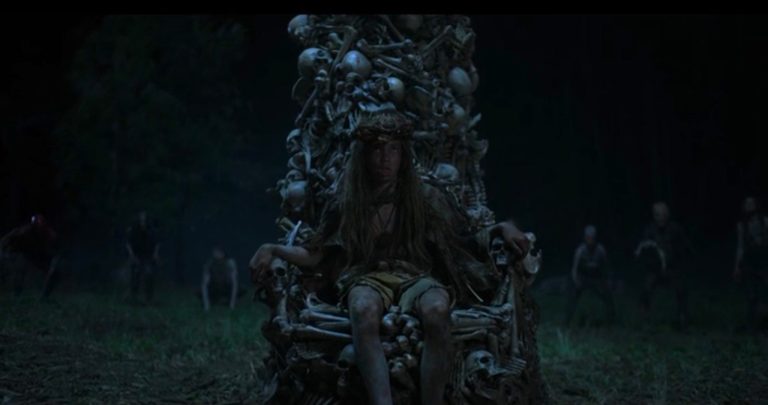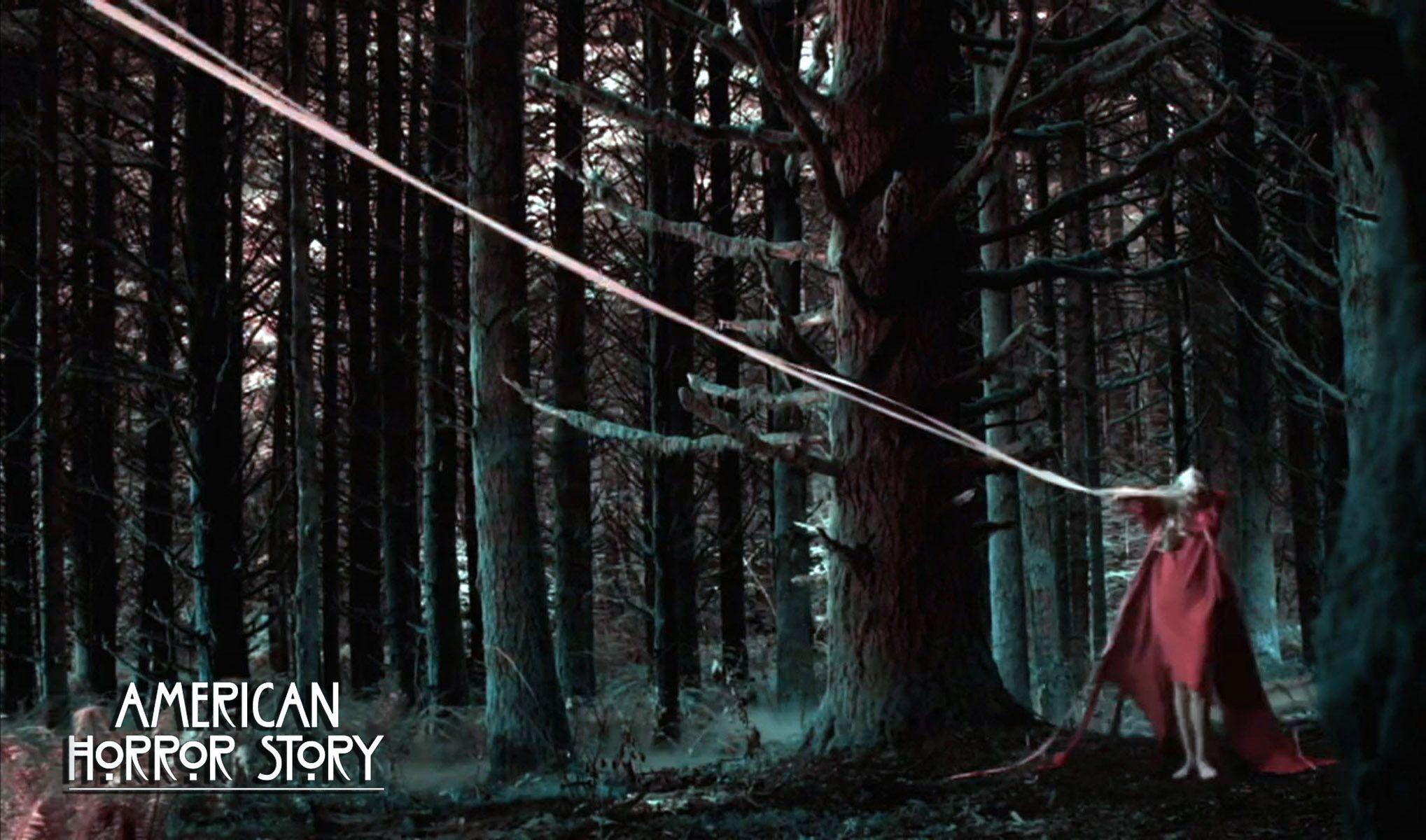With a solid first episode that subverts expectations and takes huge swings, American Horror Stories turns to the myriad horrors that lie in the woods.
It’s all about venturing outside of our comfort zones and enjoying nature and it culminates in the most powerful episode of American Horror Stories to date – Feral.
Part of what makes “Feral” such a good and striking episode is that it takes its time and considers all of its choices before deciding which wilderness-bound horror trope to use. It does lean on the Cryptid aspect, but it also laughs in the face of it on a regular basis.
The biggest strength of “Feral” is holding on to the mystery as long as possible. The point of view that “Feral” eventually adopts isn’t a problem, but it makes use of the audience’s familiarity with the genre to produce scares and set pieces that work with any of these nature horror mainstays.

RELATED: Night Of The Animated Dead Teaser OUT NOW!
“Feral” starts off with a strong cold open that propels the episode into unexpected territory right away. Addy and Jay, two bereaved parents still reeling from their son Jacob’s disappearance a decade ago, are played well by Aaron Tveit and Tiffany Dupont. A hunter named Bob Birch places himself between these two, ensuring that their painful reminiscing and cyclical disputes don’t take over the show. The twist with Birch is unexpected.
Throughout “Feral,” Cody Fern chews the countryside as if he were Bigfoot eating on a camper. It’s great to see Billie Lourd, John Carroll Lynch, and Matt Bomer again, but Cody Fern truly exploits the absurdity of this broad horror anthology. It also gives his character a Crocodile Dundee-like deranged vibe, which might or could not be intended. It’s a small element, yet it conjures up a wave of pre-existing terror connotations, making Fern’s persona both endearing and terrifying.

RELATED: Early Test Screening Results Are Positive For Texas Chainsaw Massacre Reboot
“Feral” moves at a good pace, alternating between unspoken tension and disturbing imagery that recalls The Green Inferno for a brief moment. It teases the idea of a “Yowie”–Australia’s Bigfoot–at the heart of the carnage, but then deviates from that theory. The ultimate ending of “Feral” is that the National Parks system is actually a supernatural protection protecting America from the plethora of creatures that populate these areas–the “Feral Nation.” It’s a surprising turn of events for American Horror Stories, which is weirdly pleasant.
The plot and imagery in “Feral” are more important than any metaphorical themes. However, it is significant that Jay and Addy’s camping trip begins as a lesson in relaxation and letting go, only for the two of them to spend the majority of the episode stressed and unable to relax. The final act of “Feral” briefly becomes overly exposition-heavy, but it moves quickly enough to ensure that the details covered areinteresting.
American Horror Stories’ “Feral” taps into the correct frequency that American Horror Stories and its predecessor have trained their audience to respond to.

